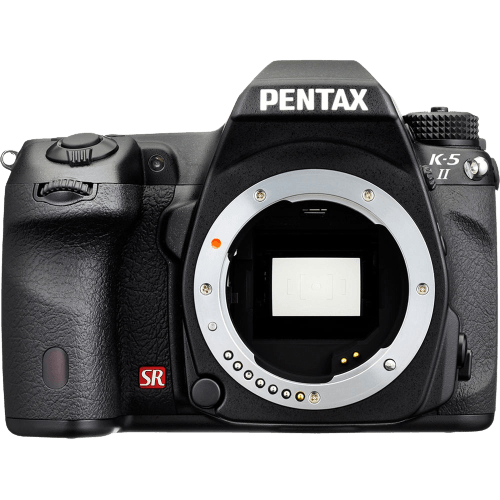Pentax K-5 II Specs and Scores

The Pentax K-5 II receives a score of 57/100. Launched in 2012 at a price of $999, this DSLR camera has dimensions of 131 x 97 x 73mm and weighs 760g (1.68lbs). In today’s market, the K-5 II’s specifications are considered outdated, but it remains a reliable option for those seeking a budget-friendly DSLR. Despite its age, the camera still offers solid features for photographers who value simplicity and functionality.
Pentax K-5 II Overview and Optics
The Pentax K-5 II receives a score of 60/100 for its optics. This camera features a 16.3-megapixel APS-C CMOS sensor, a Pentax KAF lens mount, and an image stabilization system. With a shooting speed of 7 frames per second and a Prime II processor, it delivers decent performance in capturing images.
In comparison to other cameras in today’s market, the Pentax K-5 II falls behind in terms of megapixels and sensor performance. Its DXOMARK score for the sensor is 82, which is lower than many contemporary models. The 3:2 aspect ratio is standard for most DSLRs, but the Pentax K-5 II does not stand out in terms of optical features.
The Pentax K-5 II is a reliable camera with satisfactory optics, but it does not excel in any specific area. Its features are adequate for casual photographers, but those seeking advanced optical performance may consider other options.
Pentax K-5 II Video Performance
The Pentax K-5 II scores 57/100 for its video capabilities. The camera offers Full HD video resolution with maximum dimensions of 1920 x 1080, providing clear and detailed footage. However, the maximum video frame rate is only 25fps, which is lower than many modern cameras that offer 30fps or more. This means that the K-5 II may not be as suitable for capturing fast-paced action or creating smooth slow-motion effects.
The camera includes built-in time-lapse functionality, allowing users to create stunning time-lapse videos without the need for additional software or equipment. Despite its limitations, the Pentax K-5 II can still produce quality videos for casual users or those who prioritize photography over videography. However, those seeking advanced video features may find other cameras more suitable for their needs.
Pentax K-5 II Features and Benefits
The Pentax K-5 II receives a feature score of 54 out of 100. This score reflects the camera’s capabilities, including its 3-inch screen with a resolution of 921,000 dots. However, the K-5 II lacks several modern features found in contemporary cameras, such as a touchscreen, flip screen, GPS, WiFi, and Bluetooth connectivity.
Considering today’s market, the Pentax K-5 II falls short in providing features that many photographers find essential. The absence of a touchscreen and flip screen limits the ease of use and versatility of the camera. Additionally, the lack of GPS, WiFi, and Bluetooth connectivity hinders the user’s ability to efficiently share and transfer images or track location information.
The Pentax K-5 II’s feature set may not satisfy the needs of photographers who require advanced capabilities and seamless connectivity. This camera is more suitable for those who prioritize simplicity and are content with basic features.
Pentax K-5 II Storage and Battery
The Pentax K-5 II receives a storage and battery score of 43/100. This camera features one memory card slot, accepting SD, SDHC, and SDXC cards. The battery life of the K-5 II lasts for 980 shots, using a D-LI90P battery type. However, it lacks USB charging functionality.
In the current market, the Pentax K-5 II’s storage and battery specifications may not be highly competitive. With only one memory card slot and no USB charging, users may find limitations in storage capacity and charging options. Despite these drawbacks, the camera still offers a decent battery life of 980 shots, making it suitable for casual photography sessions.
